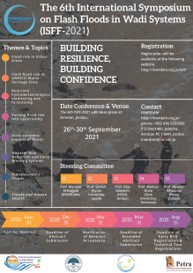Meteorology
- Reporting about Meteorological disasters in Cagayan River Basin, Philippines
List of Disasters: Meteorology
- Droughts (2013-2020) - The Department of Agriculture Region 2 reported damages on corn production alone due to drought is almost 47 billion pesos from 2013 to 2020. That is equivalent to 6.7 billion annual loss in corn production due to moisture stress.
CORN CROP DAMAGES CAUSED BY CALAMITIES IN REGION 02 (Department of Agriculture-Regional Field Office 02, 2020)
Year Drought events Value of Losses (P'000) 2013 DROUGHT (May 15- July 15, 2013) 760,180,245.98 2014 MOISTURE STRESS (January 15-April 22, 2014) 369,206,688.00 MOISTURE STRESS (June 1-July 25, 2014) 83,441,410.80 2015 Drought (August 2015) 825,324,080.00 2016 DROUGHT (August 29, 2016) 1,144,352,720.00 2017 DROUGHT ( July 2017) 38,519,508,400.00 2018 - - 2019 WEAK EL NINO (January-March, 2019) 2,083,383,944.96 2020 DROUGHT (January-February, 2020) 1,255,529,424.88 DROUGHT (May-July, 2020) 1,891,437,560.57 TOTAL 46,932,364,475.19 - Reporting about Meteorological disasters in Vu Gia-Thu Bon Basin, Vietnam
- Typhoon
According to the General Department of Meteorology and Hydrology, the number of storms and tropical depressions pouring into the Central region accounts for nearly 70% of the total number of storms and tropical depressions pouring into Vietnam. Storms appear early (March - June) or late (December). Storms, tropical depressions combined with cold air in favourable terrain conditions often cause heavy rain and are the impact of flooding and erosion in rivers in recent years.
Storms tend to increase in frequency and intensity, heavy rain is concentrated in a short time and occurs over a large area of the basin, making the process of flood concentration happen very quickly.
Typhoon Xangsane (2006): Landed on the coast from Da Nang to Quang Ngai on October 1, 2006. Xangsane is considered the strongest storm to hit Vietnam in about 20 years. The storm left 68 people dead or lossed, nearly 270,000 houses severely damaged, 1,287 hectares of farmland damaged, 65,000 poultry killed and more than 700 fishing boats sunk.
Typhoon Ketsana (2009): On September 26, 2009, Typhoon Ketsana made landfall in the Central and Central Highlands regions. The biggest damage occurred in provinces and cities such as Binh Dinh, Quang Ngai, Quang Nam, Da Nang, Thua Thien Hue… The Central Steering Committee for Flood and Storm Control said: Ketsana is one of the strongest storms within 40 last year in Vietnam. Despite good forecasting and prevention, this storm still caused great damage: 163 people died, 11 people were lossed and 629 people were injured; 21,614 houses collapsed or drifted; 258,264 houses were damaged and 294,711 houses were flooded. In addition, storms and floods also caused heavy damage to agriculture, fisheries, transportation, electricity, irrigation..., total damage was estimated at 14,014 billion VND.
Storm Nari (2013): At 11pm on October 14, 2013, the storm swept through the central provinces, knocking off the roofs of many houses, breaking large trees, falling power poles, and damaging industrial and forestry crops and about 77 ships were damaged. There are reports of at least 3 deaths and 49 injuries. The storm accompanied by heavy rain with rainfall from 200mm to 400mm, then caused flooding. Rain flooded 350 hectares of rice and 3284 hectares of crops.

Figure 17.1. Orbits of storms affecting Vu Gia Thu Bon river basin, from 1952 to 2020. Source : National Institute of informatics, Japan - Drought
- 1993: The drought lasted from July 10 to August 20, 1993, with a total affected rice land area of 14,322 ha.
- 1998: The drought lasted from May to September 1998, affecting 32,767ha of productive land. Of which, 2,819ha was lost and the yield was reduced by 15,000ha. Lack of drinking water for about 200,000 people.
- 2001: The drought lasted from July to August, causing severe drought on 8,000 hectares of rice, reducing yield by 60%. Lack of water for other industries, especially for the industry due to saltwater intrusion.
- 2008: From May to July, 6,000 hectares of rice suffered from severe drought without rain. Salinity penetrates deep into the river, the problem of water shortage is very serious, especially in urban areas such as Da Nang city and Quang Nam coastal districts.
- 2009: July rainfall in the whole province is low (less than 50mm) along with the operation of reservoirs, the water level of rivers in the province is lower than the average level for many years, even at some important stations. The lowest water level ever appeared (An Trach - Yen river: 1.5m) has affected agricultural production (5000ha of summer-autumn rice is drought) and daily life.
- 2010: This is a particularly severe drought year. Prolonged hot weather, high temperature, little rain, a large amount of water evaporation, the measured rainfall is only 30% compared to the same period in 2009, so the reservoirs soon dried up, more than 10,000 hectares of land Agriculture is in a critical situation because there is no water for irrigation.
- Typhoon















